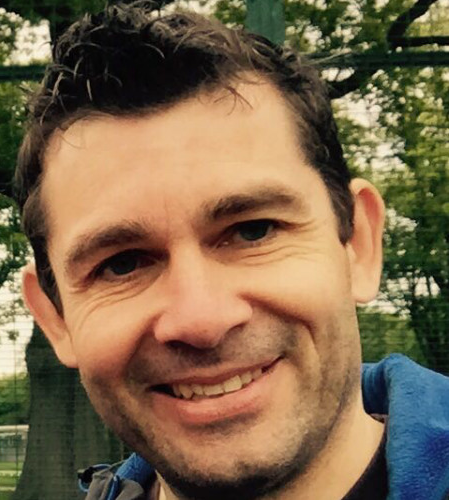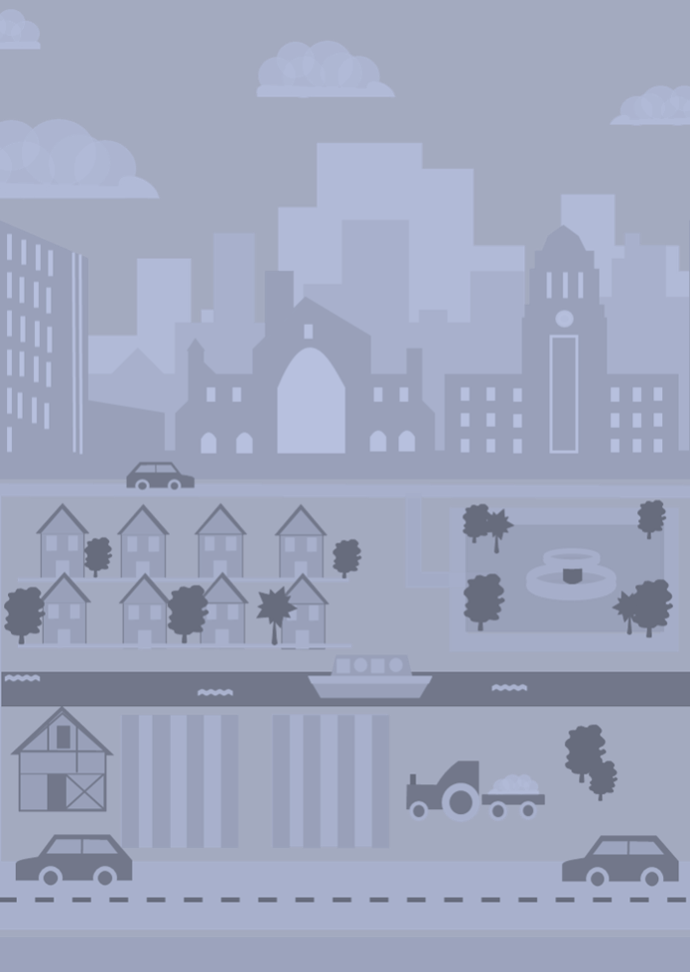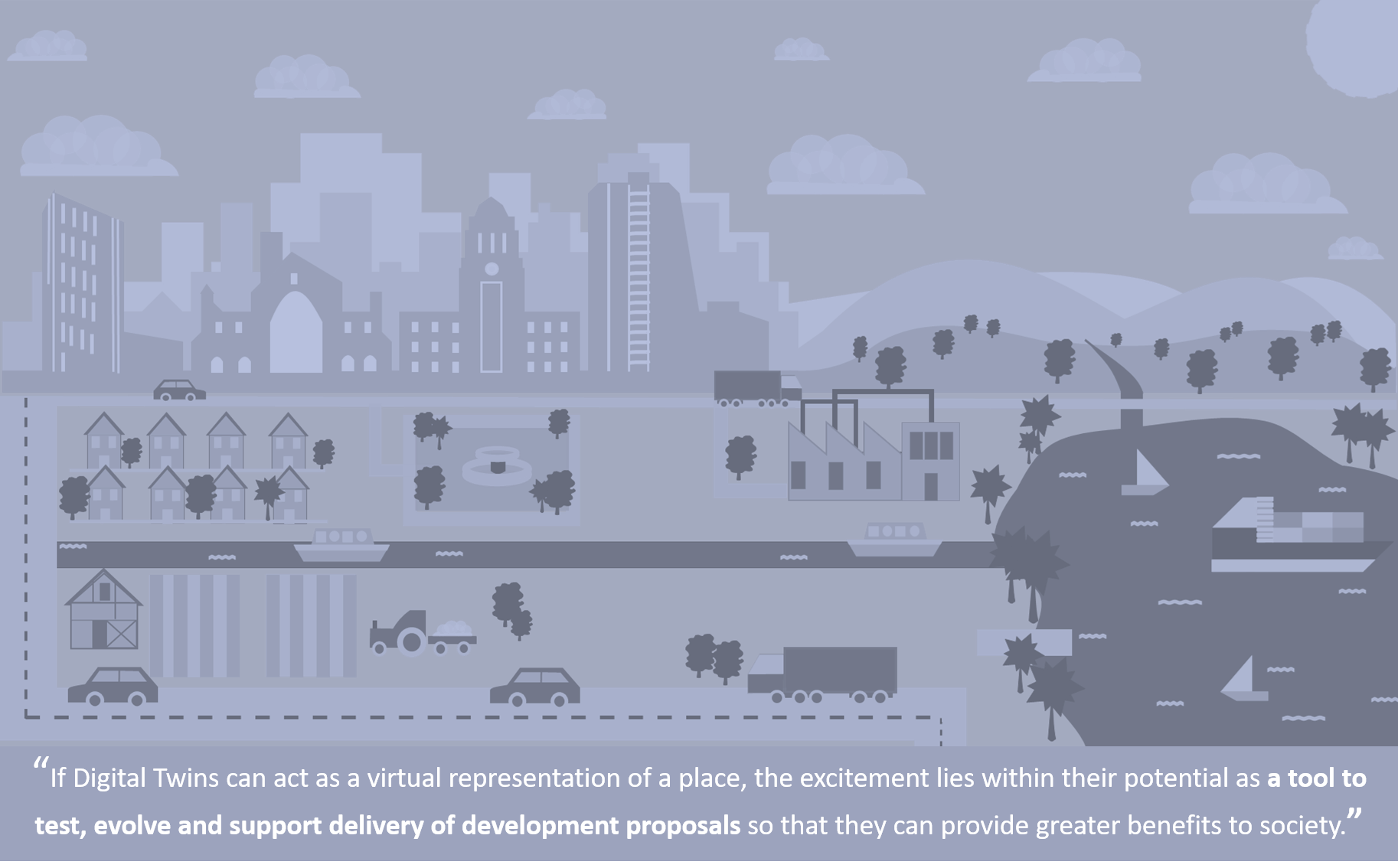Plan with confidence: How Digital Twins can improve lives using fewer of our limited resources
Exploring how Digital Twins can breathe new life into urban areas without wasting money, time and materials. What are the consequences if we don’t get Urban Regeneration right? Can Digital Twins increase that likelihood of making impactful decisions the first-time?
Previously on our Digital Twins Series…
We talked to Leeds City Council about the areas and systems that could be impacted by Digital Twins within a city and the information that would be needed to facilitate accurate decisio-making
Digital Twins & Decision-making Part 2
We continue with the idea of Digital Twins and Decision-Making, this time from the perspective of designing and regenerating buildings and places. We had a virtual sit-down with Avison Young to discuss why Digital Twins are such an exciting area when looking to regenerate urban areas and how they can act as a tool to test, evolve and support delivery of development proposals but with the premise that Digital Twins work towrds being genuinely trusted, meaningful and available to everyone.
Our Expert
Stuart Howie is a Principal at Avison Young, a global real estate firm that provides consultancy, transactional and asset management services. With 25 years’ experience in economic development and regeneration, Stuart talks with CEO/CTO David McKee about the huge potential Digital Twins offer towards the improvement of towns and cities across the country.

What does Urban Regeneration mean?
For me, it’s about making places better and improving people’s lives. This can take many forms, such as:
- Providing access to good quality homes
- Creating employment space and new job opportunities
- Improving infrastructure
- Creating sustainable places for people to enjoy and be proud of
- Supporting businesses, residents and the community by enhacing what places can do for them
How do you see Digital Twins integrating into Avison Young?
The projects we deal with involve complex ecosystems and high levels of capital investment. Avison Young has therefore invested heavily in the use of data analytics, intelligence, and technology to drive successful investment strategies and approaches for our clients. We are increasingly seeing the benefits of using such data driven tools that increase the returns from investment.
This naturally leads to a focus on improving the collation, use and interpretation of data. It’s an area of development that we see as being critical to realising a broader Smart Cities agenda.

In this context, a Digital Twin offers the opportunity to provide a virtual testbed for a location to improve future decision-making. This is where we see a huge potential for Digital Twins within Avison Young, by using digital simulation to shape better design, use, feasibility and delivery approaches so that every £1 is invested more effectively.
What do you see as the consequences of not getting regeneration right the first time?
It’s worth noting that regeneration is a never-ending process as any sizeable geography will always have areas thriving and areas struggling. Getting regeneration “right the first time” is therefore more about improving local outcomes in a timely and cost effective manner than reaching a specific destination.
In that context, one of the consequences of not getting regeneration right, is that society doesn’t get the dividend it wants and needs from investment designed to improve places.
Anything that can be done to accelerate the regeneration dividend has to be considered, whether that is through improved or increased job opportunities or more fulfilling living environments and healthier lives. In short, it’s not just about it being more cost effective, but it’s about accelerating the delivery of social and economic benefits to communities across the country.
“It’s about accelerating the delivery of social and economic benefits to communities across the country.”
You’ve talked about evidence-based decision making: What kind of evidence does Urban Regeneration need?
There’s a number of ways that regeneration or projects that fall under that umbrella term are tackled. Ideally, you start with the need, or the challenge, to get a clear picture of the problem or the series of issues that we’re trying to address.
Those issues may be tangible, such as infrastructure, connectivity, development need or market economics. Such tangible issues can be quite easy to identify, but often involve major investment to tackle. The harder areas; however, are typically around intangible challenges: the feel of the place, its uniqueness, its vibrancy and the buzz of a place – all which part of its “brand” and that give people a sense of pride and belonging..
Because intangibles are a sum of many factors, they can be really hard to tackle effectively. Digital Twins therefore appeal in the way they offer the ability to look at individual intervention projects in the context of a wider place model. This offers a really powerful evaluation ability compared to just assessing an individual project, executing it, and then stepping back and seeing what that does to the rest of the ecosystem in retrospect.
What excites you the most about digital Twins within this industry?
If Digital Twins can act as a virtual representation of a place, the excitement lies within their potential as a tool to test, evolve and support delivery of development proposals so that they can provide greater benefits to society.
It could enable us to use resources more effectively by changing the linear process that a lot of developments, or infrastructure investments, are designed and assessed in. By using Digital Twins to help us assess new projects against a much broader representation of a place it could help shape more effective investments in real-time.
For example, we would typically design, cost, and assess the benefits, and do a business case and cost benefit analysis, for an investment. A Digital Twin can help build upon and support this by using a wider context of traffic data, footfall data, air quality data and much more to create a dynamic environment in which to shape projects. It could allow us to iterate those projects at the design stage and shape much better investments.
Overall, and with 3D visualisation you can also envisage Digital Twins playing a bigger role in stakeholder engagement in areas such as:
- Visualizing and Showcasing the role project plays in society and what it delivers to a place.
- Policy Testing for government and local governments when creating jobs or tackling poverty
- Decision-making on Investments
- Communication of ideas

When Digital Twins are visualised, it is really powerful form of illustration and it lifts the veil to Stakeholders to provides them with more granularity: Imagine if we had proposals for a development in a town centre: If we had a Digital Twin that allowed a deeper focus on the impact on footfall, air quality and the flow through town, residents, businesses and the council themselves would get a clearer picture of both the positive and negative impacts of development on the wider place.
How do you see the potential for Digital Twins that model the interiors of buildings, as well as the exterior, and that interplay between the different fidelity of models that may be involved?
The Holy Grail, the potential for Digital Twins in this space, is the ability to layer design. Whether that is the interior of a building, a streetscape for a master plan, whatever it is, it will have the ability to alter the process of designing.
Rather than designing spaces as sequential process, it becomes iterations of saying: we’ve done a design, we don’t think we can afford all these benefits, how do we revisit? A Digital Twin could bring design metrics together under a more rounded set of criteria that interplays quality of design, sustainability and social outcome costs, rather than starting with a drawing and having to chop bits off when we work out we can’t afford it !
In the context of sustainability, I can imagine a Digital Twin showing real time indicators on particularly Resource Use Sustainability that can have a knock-on effect on projects that are being developed, based-off of projects that are well established.
If anything was possible, what would you say is the future of Digital Twins within your sector?
The dream position would be to have live real-time models of places, that are used in an open source shared manner, allowing all stakeholders to plan with confidence through a common set of high-quality (and reliable) representations of a place. That would allow more focus to be put on really changing communities and places by mitigating the risk of unintended or ineffective consequences of investments.

You mentioned Digital Twins should be an open shared model, which would require Open Data. One of the challenges with Digital Twins is the scale of computer data storage that is required, which requires an investment from the companies providing it that could offset their willingness to make things open. How do you see that playing out?
I’m not a data scientist, but commercially it will come down to identifying the trade-off between improvement in quality the Digital Twins, their ability to add value and the costs to develop and use them. This could play out in a number of ways but on the face of it:
- Digital Twins will need to prover their value add, meaning they also need enough data and rigour to be meaningful and trusted; and
- Ultimately, it’s likely that Civic authorities would need to be a key stakeholder in terms of supporting and championing the value of Digital Twins.
Perhaps it will need a standardized approach or a template each town could adopt for their very own Digital Twin that was trusted by all stakeholders. We needs pioneers, like Slingshot Simulations, help push the boundaries and shape these new models. Ultimately Digital Twins will need to pay for themselves so as they demonstrate their ability to support better decision making and save costs, the economics of digital Twins will evolve alongside the technology itself.
What would you see as being the biggest impact Digital Twins could have on society?
If we can make better decisions by using Digital Twins we can improve people’s lives and make more difference from the limited resources we have.
Due to COVID-19 there’s going to be an acceleration of the reimagining needed in places up and down the country. If we can get Digital Twins to provide digitally enabled, data driven ways of making better decisions and generate “bigger bang for our buck” in terms of the social, economic, sustainability and financial outcomes, it has to be a great thing. The risk clearly is, if all that Digital Twins do is tell us what we knew in a pretty format rather than informing the decision, then we’re not quite there yet.
To Finish, what is your definition of a digital twin in one sentence.
A virtual testing approach to provide better outcomes for communities, by making smarter investments into places.
More in the Series
- What are Digital Twins today?
- Humancentric Digital Twins
- Personal Digital Twins
- Agent-based Modelling for Digital Twins
- Digital Twins and Decision-Making: Leeds City Council
- Digital Twins and Decision-Making: Urban Regeneration
- The Role of Simulation in Decision-Making
- Investing in Digital Twins
- End of Open Plan Offices? Smart Solutions for a Safer Office
- Data Insights, Digital Twins and Dashboards
- Digital Twins for Beginners
- Series Summary
